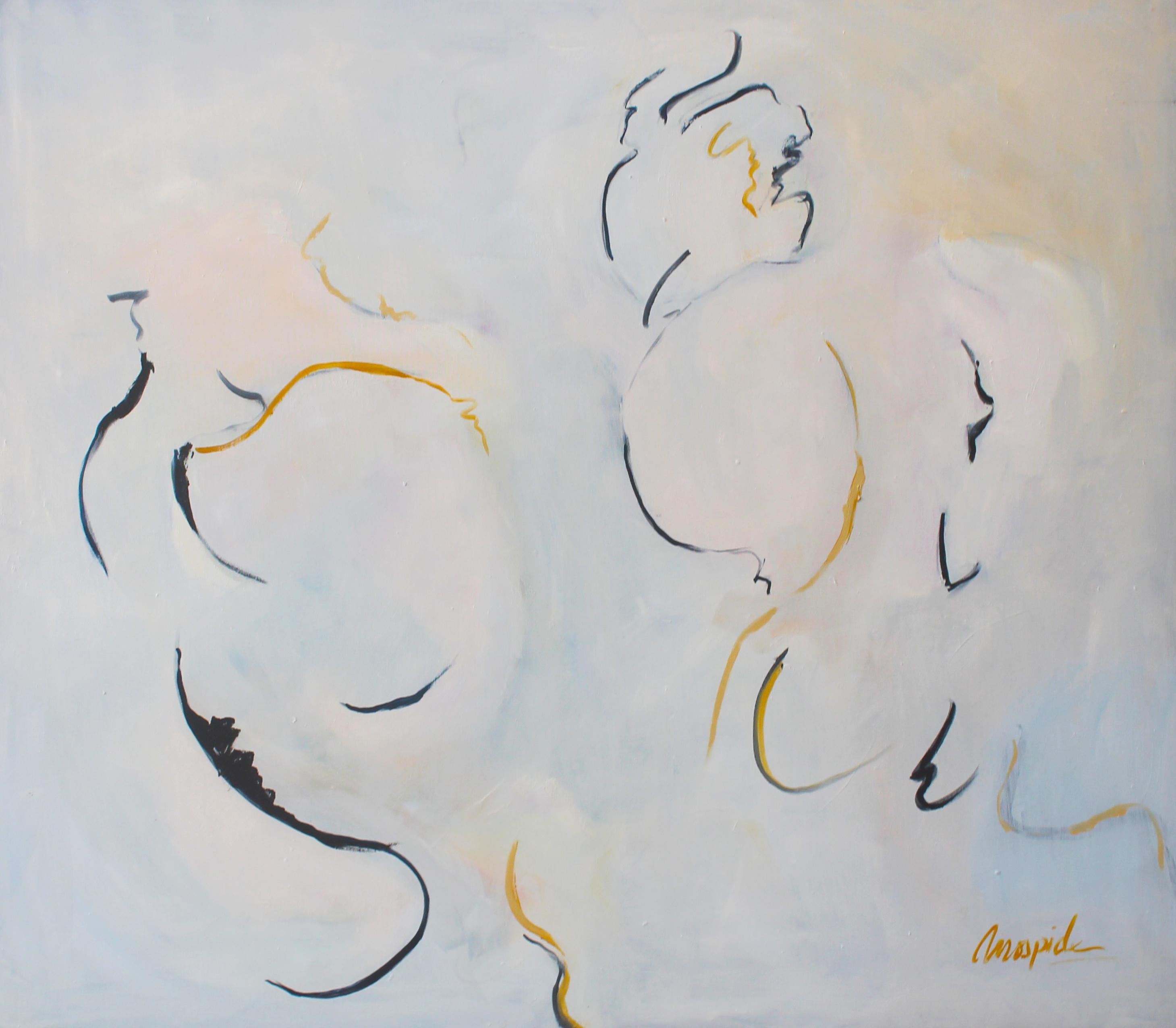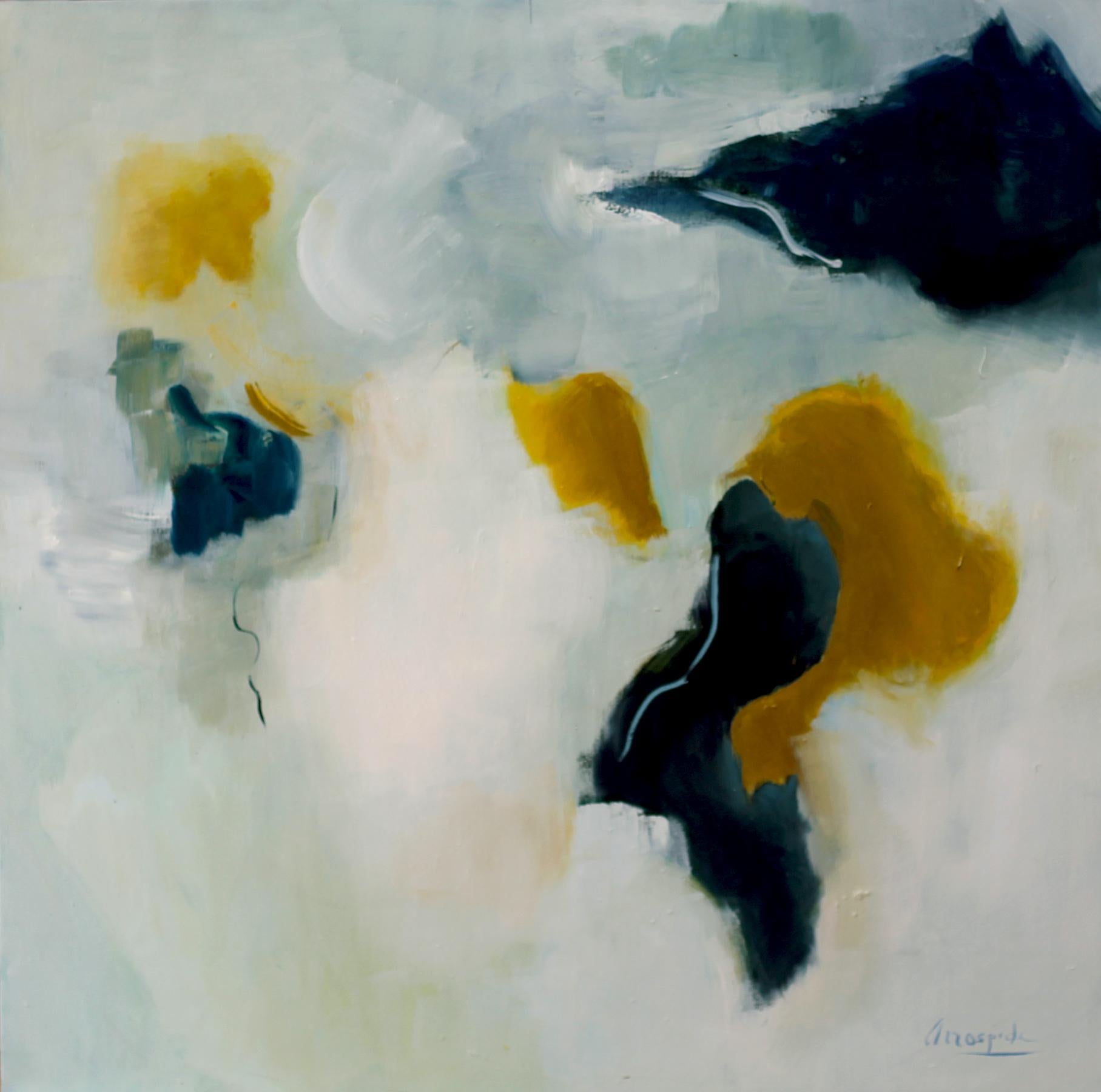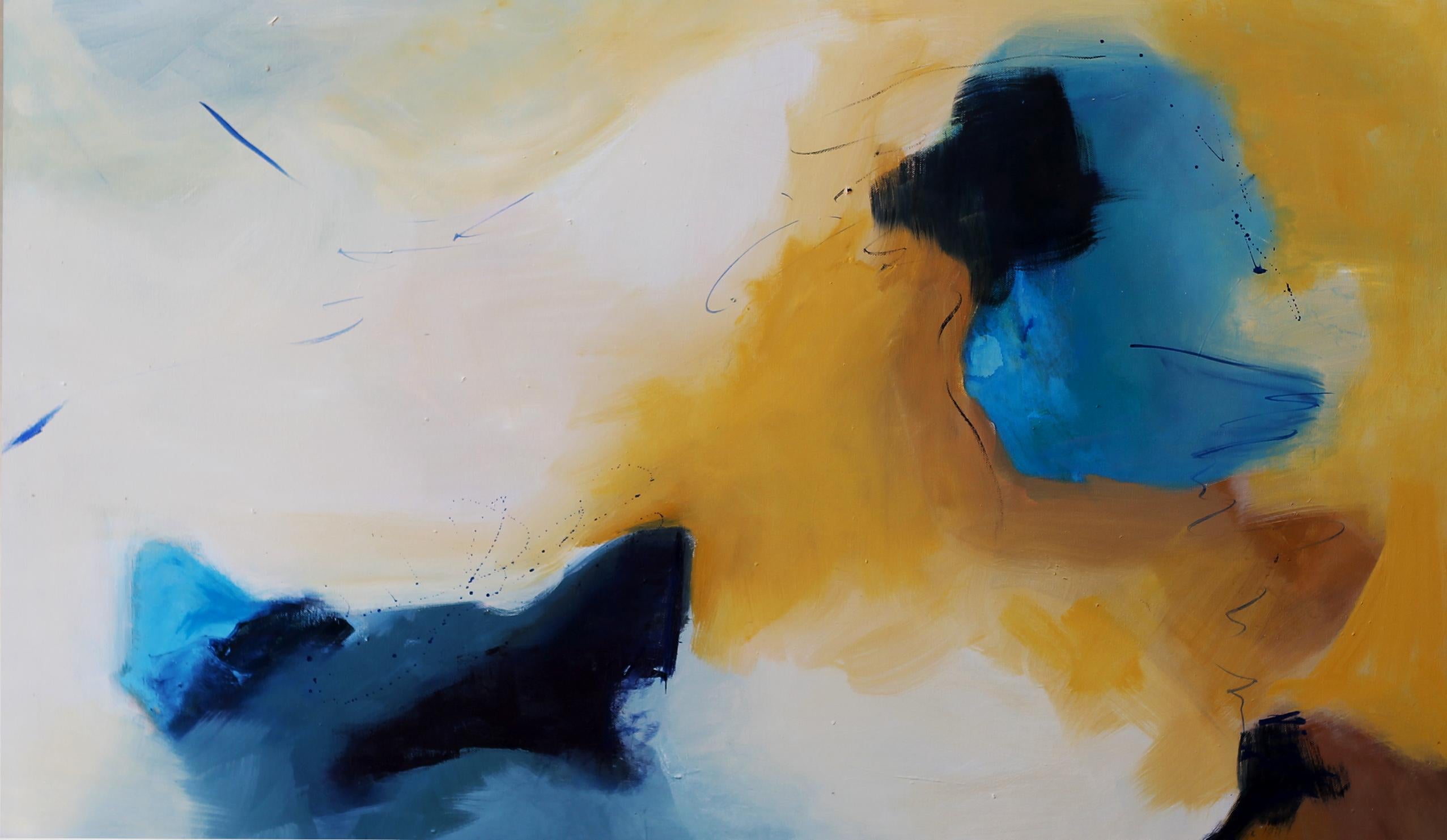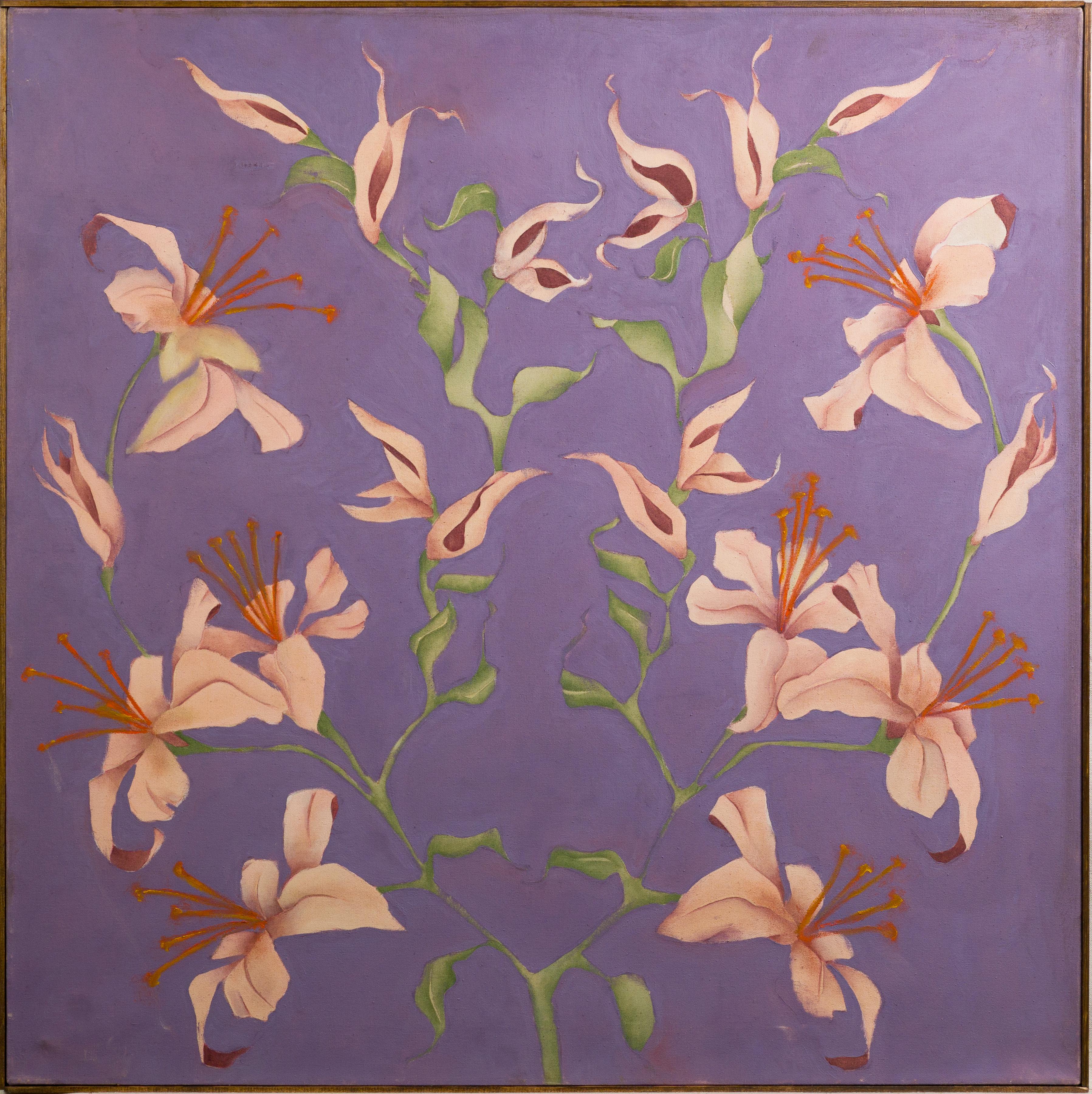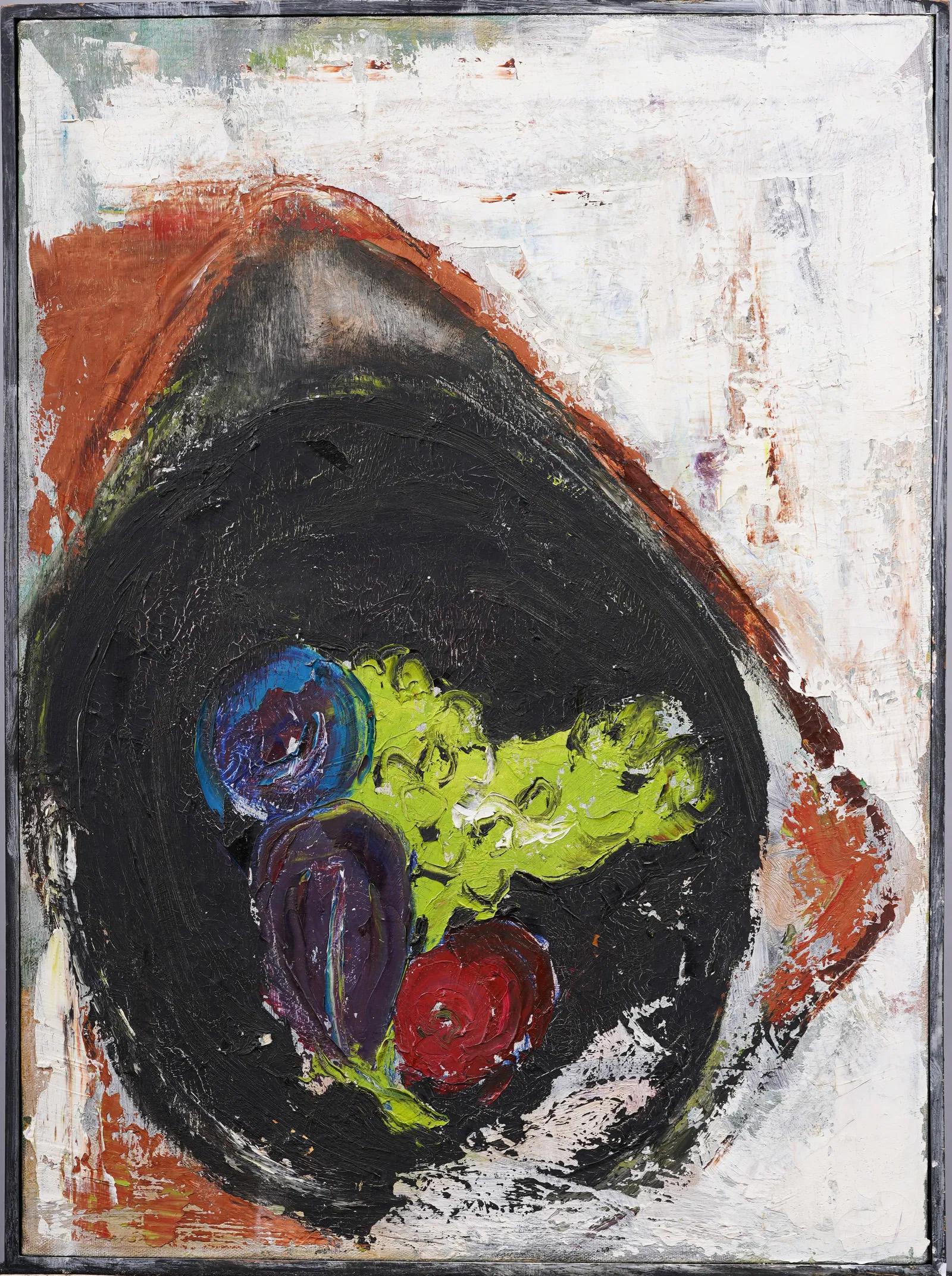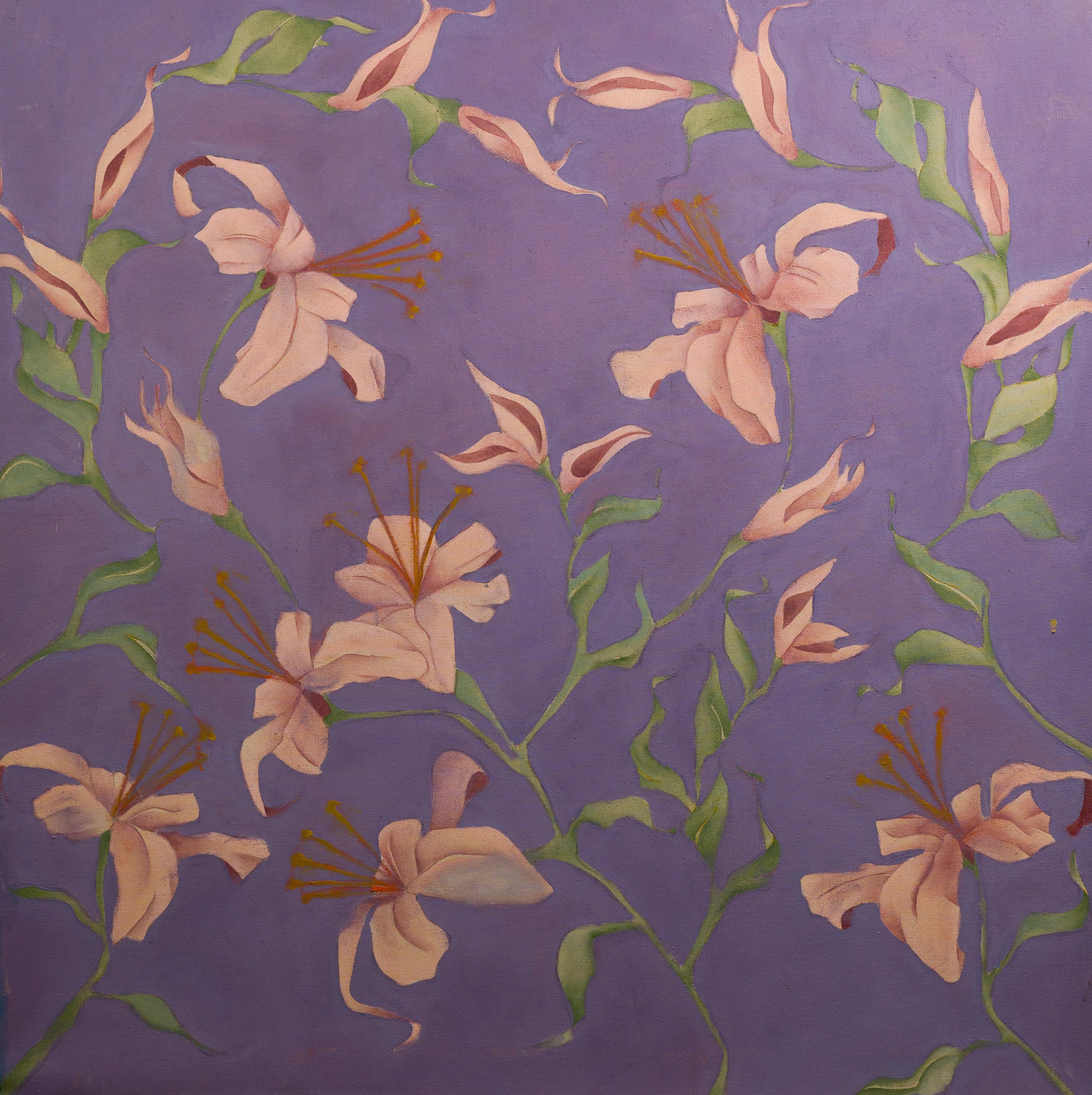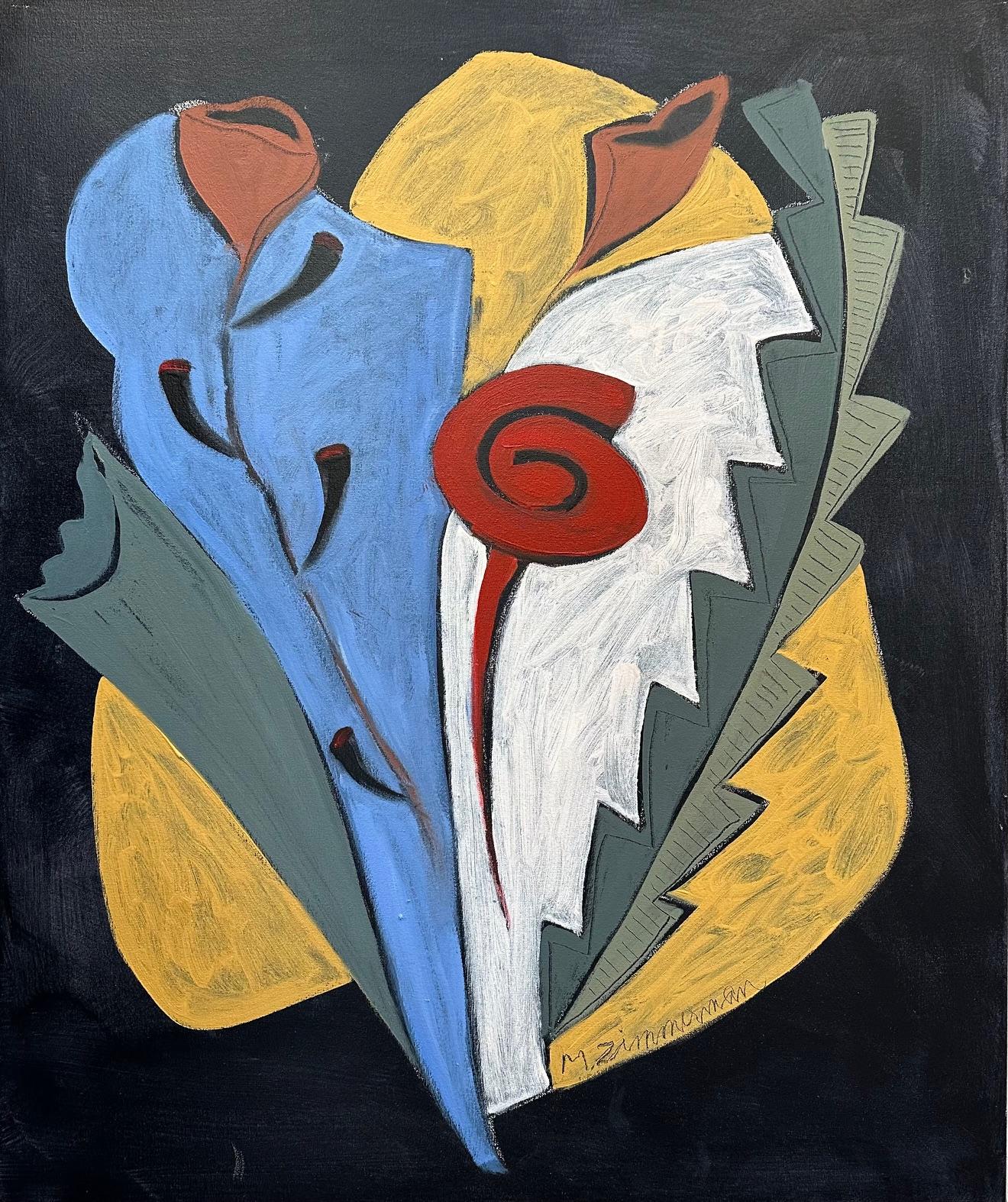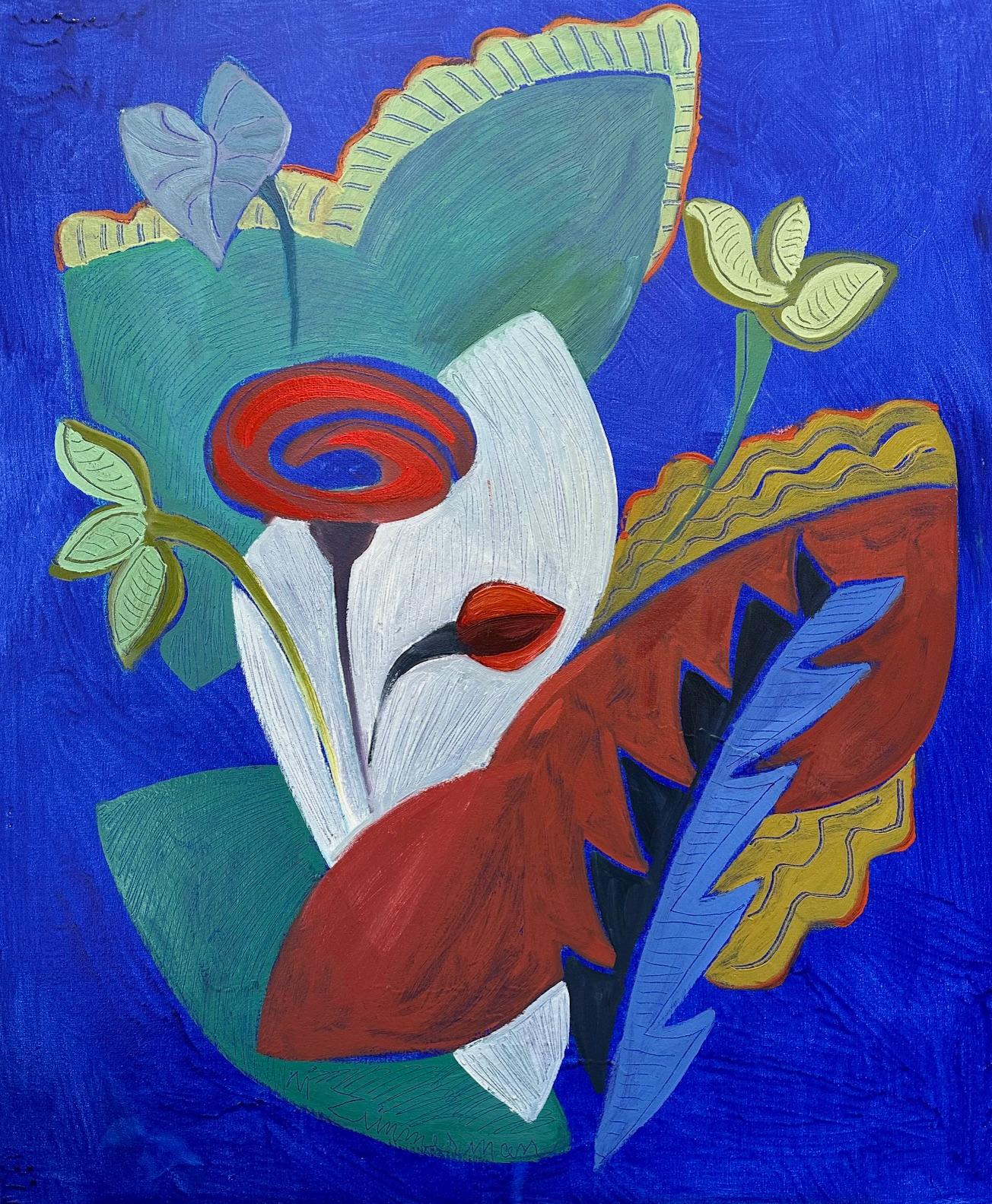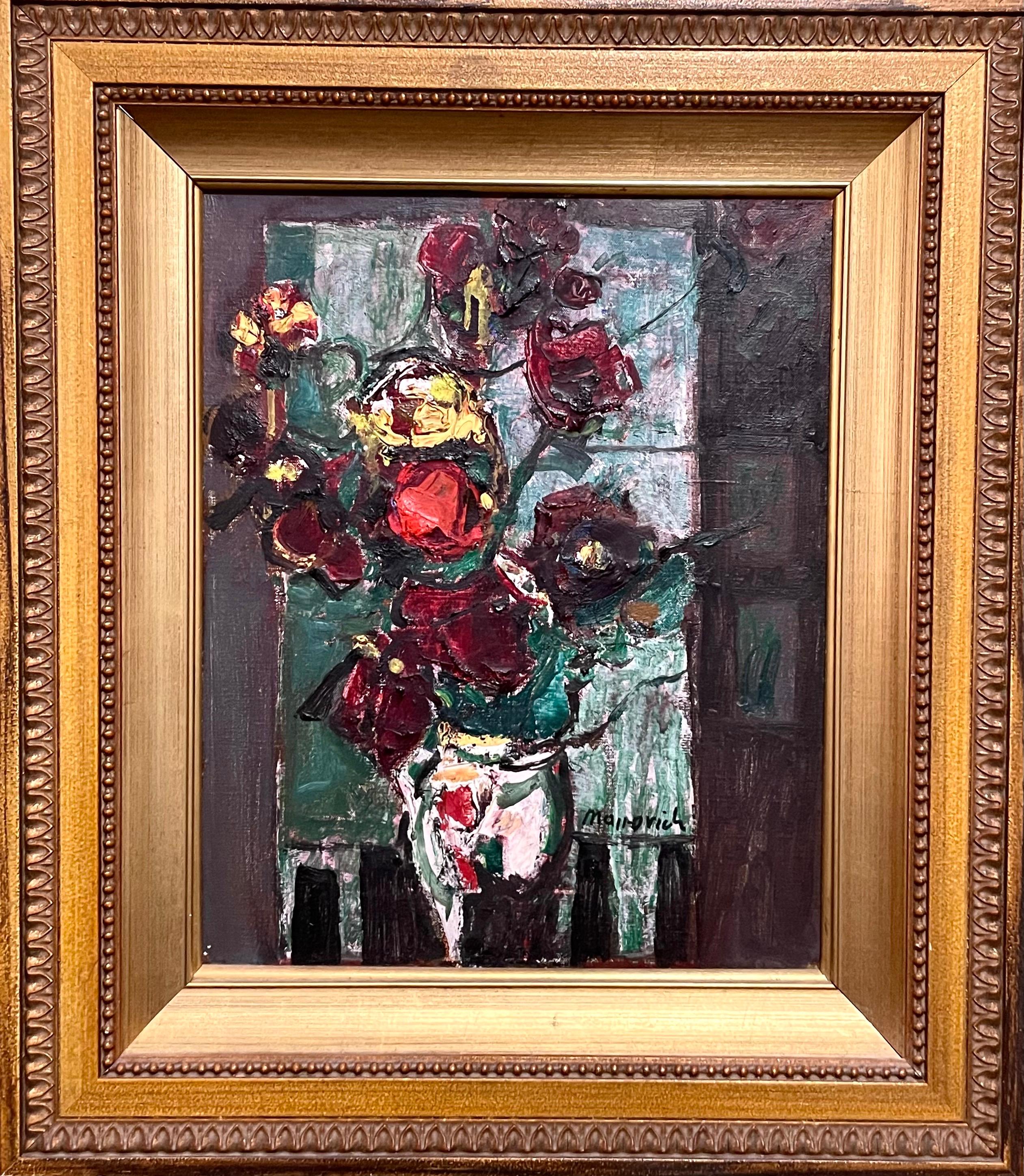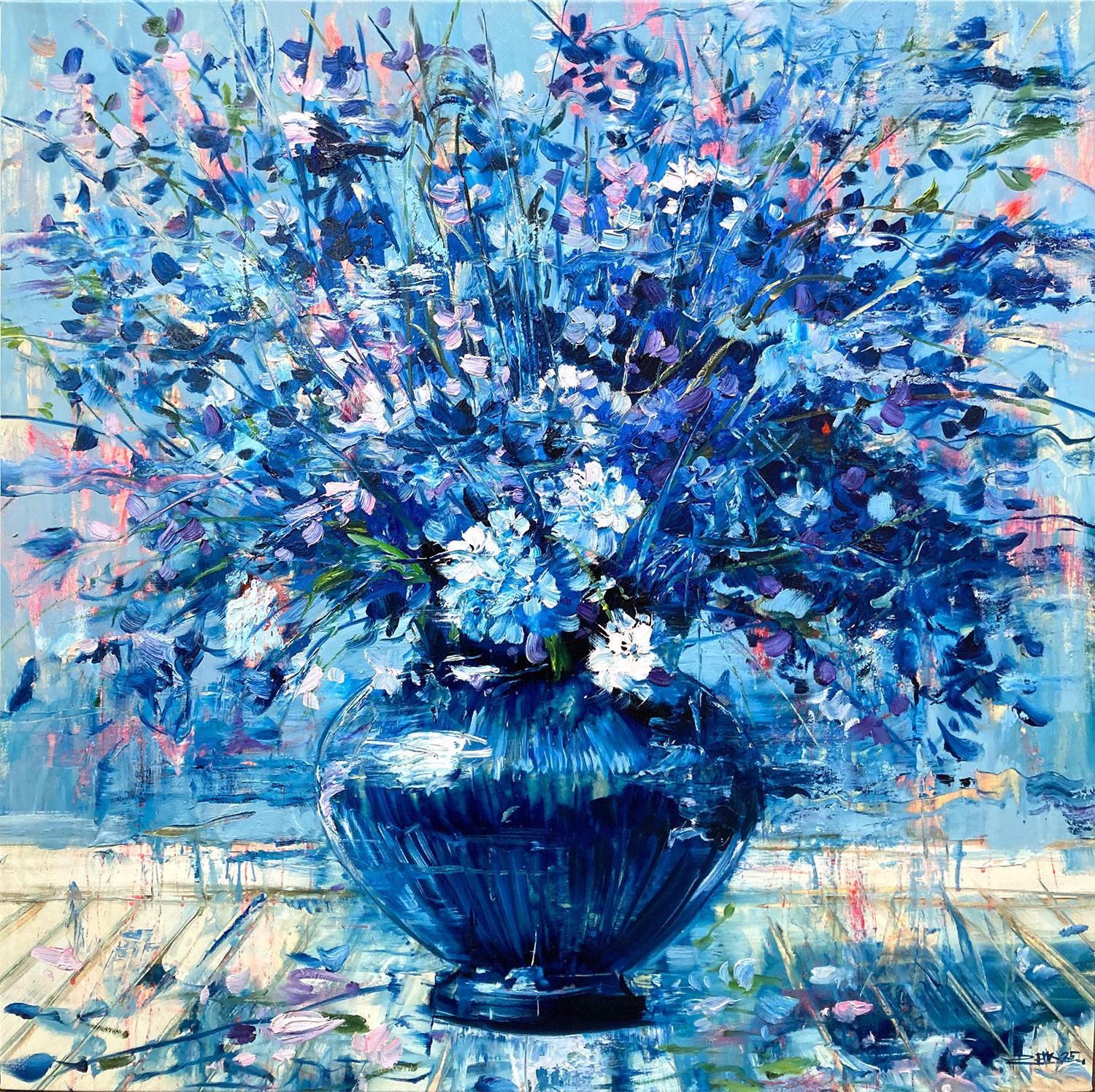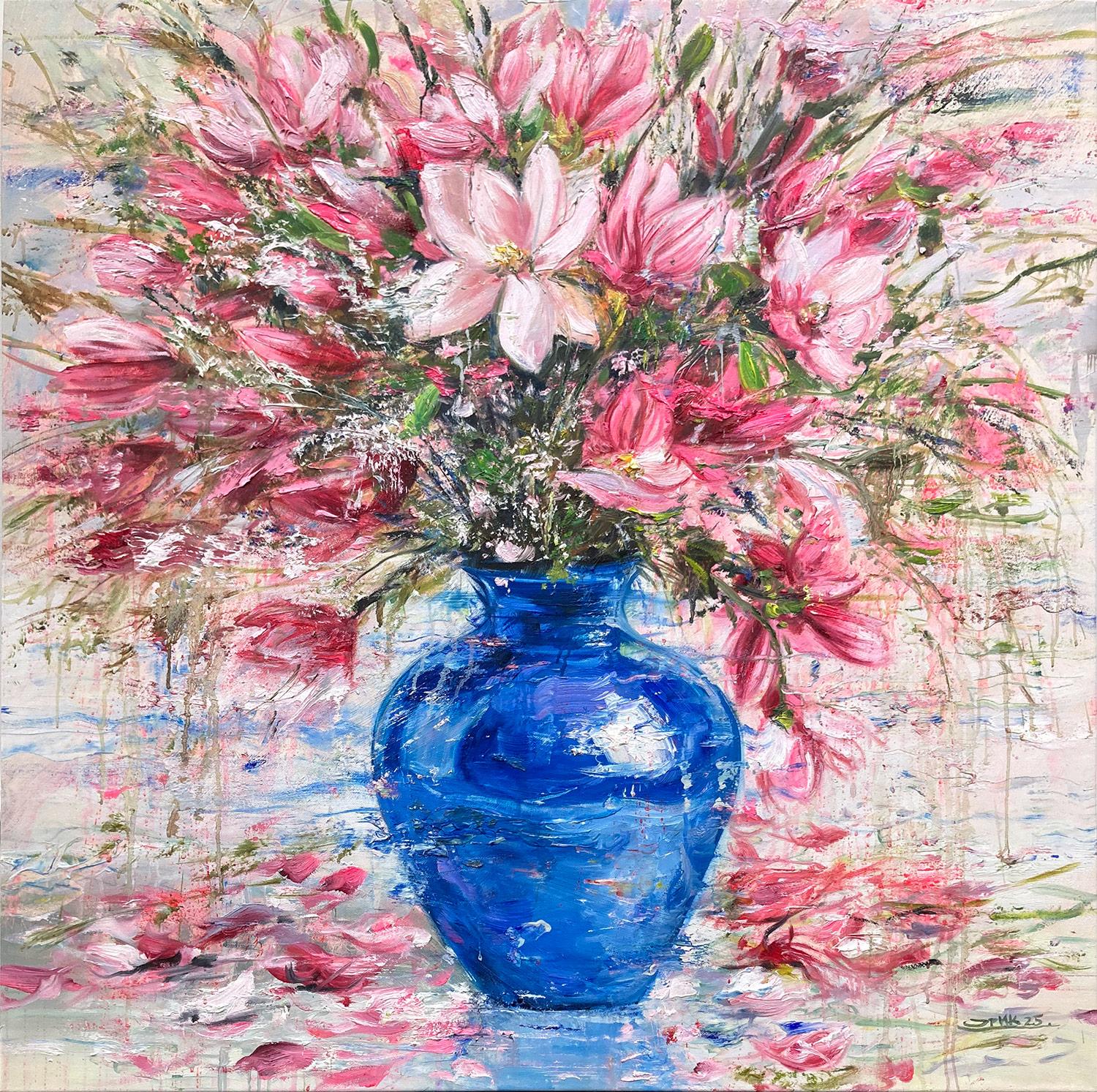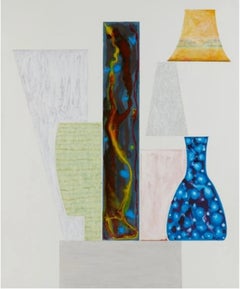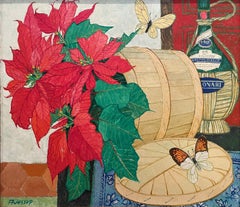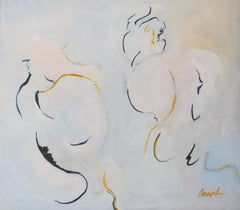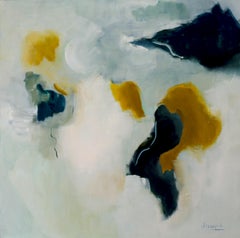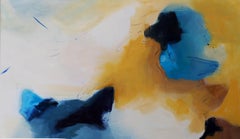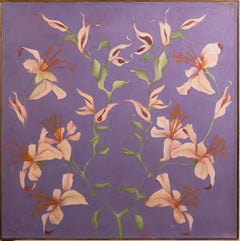"Candelabra, " Edward Millman, Colorful Abstract Expressionist Still Life
View Similar Items
Want more images or videos?
Request additional images or videos from the seller
1 of 10
Edward Millman"Candelabra, " Edward Millman, Colorful Abstract Expressionist Still Life1962
1962
$4,000List Price
About the Item
About the Seller
5.0
Platinum Seller
Premium sellers with a 4.7+ rating and 24-hour response times
Established in 2022
1stDibs seller since 2022
119 sales on 1stDibs
Authenticity Guarantee
In the unlikely event there’s an issue with an item’s authenticity, contact us within 1 year for a full refund. DetailsMoney-Back Guarantee
If your item is not as described, is damaged in transit, or does not arrive, contact us within 7 days for a full refund. Details24-Hour Cancellation
You have a 24-hour grace period in which to reconsider your purchase, with no questions asked.Vetted Professional Sellers
Our world-class sellers must adhere to strict standards for service and quality, maintaining the integrity of our listings.Price-Match Guarantee
If you find that a seller listed the same item for a lower price elsewhere, we’ll match it.Trusted Global Delivery
Our best-in-class carrier network provides specialized shipping options worldwide, including custom delivery.More From This Seller
View All"Abstract (with Two White Vases) " Ed Baynard, Still Life Composition
By Ed Baynard
Located in New York, NY
Ed Baynard
Abstract (with Two White Vases), 2005
Signed, titled, and dated along the verso
Acrylic on canvas
48 x 40 inches
Category
Early 2000s Abstract Abstract Paintings
Materials
Canvas, Acrylic
"Nature morte" Bela de Kristo, Mid-century Cubist Still Life Abstract Cello
By Bela De Kristo
Located in New York, NY
Bela de Kristo
Nature morte, circa 1956
Signed lower right
Oil on board
19 5/8 x 11 3/4 inches
Provenance:
Alexander Kahan Fine Arts, New York
Private ...
Category
1950s Cubist Still-life Paintings
Materials
Oil, Board
"Untitled" Albert Heckman, Modernist Saturated Blue and Yellow Still Life
By Albert Heckman
Located in New York, NY
Albert Heckman
Untitled, circa 1950
Signed lower right
Oil on canvas
18 x 24 inches
Albert Heckman was born in Meadville, Western Pennsylvania, 1893. He went to New York City to try his hand at the art world in 1915 after graduating from high school and landing a job at the Meadville Post Office. In 1917, at the age of 24, Heckman enrolled part-time in Teachers' College, Columbia University's Fine Arts Department to begin his formal art education. He worked as a freelance ceramic and textile designer and occasionally as a lecturer at the Metropolitan Museum of Art. In the early 1920s, at the age of almost 30, he graduated with a Bachelor of Arts degree from Columbia Teachers College. He was especially impacted by his instructor at Columbia, Arthur Wesley Dow.
After graduating, he was hired by the Teachers' College as a Fine Arts instructor. He stayed with Columbia Teachers' College until 1929, when he left to attend the Leipzig Institute of Graphic Arts in Leipzig, Germany. Isami Doi (1903-1965), who was born in Hawaii, was arguably his most impressive student at Columbia. Doi is now regarded as one of the most prominent artists hailing from Hawaii. Heckman became an active member and officer of the Keramic Society and Design Guild of New York in the 1920s as part of his early commercial art career. The Society's mission was to share knowledge and showcase textile and ceramic design exhibits.
In 1922, Heckman married Florence Hardman, a concert violinist. Mrs. Heckman's concert schedule during the 1920s kept Albert and Florence Heckman apart for a significant portion of the time, but they spent what little time they had together designing and building their Woodstock, New York, summer house and grounds. A small house and an acre of surrounding land on Overlook Mountain, just behind the village of Woodstock, were purchased by Albert and Florence Heckman at the time of their marriage. Their Woodstock home, with its connections, friendships, and memories, became a central part of their lives over the years, even though they had an apartment in New York City.
Heckman's main artistic focus shifted to the house on Overlook Mountain and the nearby towns and villages, Kingston, Eddyville, and Glasco. After returning from the Leipzig Institute of Graphic Arts in 1930, Mr. Heckman joined Hunter College as an assistant professor of art. He worked there for almost thirty years, retiring in 1956. Throughout his tenure at Hunter, Mr. Heckman and his spouse spent the summers at their Woodstock residence and the winters in New York City. They were regular and well-known guests at the opera and art galleries in New York. Following his retirement in 1956, the Heckmans settled in Woodstock permanently, with occasional trips to Florida or Europe during the fall and winter. Mr. Heckman's close friends and artistic career were always connected to Woodstock or New York City. He joined the Woodstock art group early on and was greatly influenced by artists like Paul and Caroline Rohland, Emil Ganso, Yasuo Kuniyoshi, Andre Ruellan, and her husband, Jack...
Category
1950s Modern Interior Paintings
Materials
Oil, Canvas
"Floral Still Life Arrangement" Frederick Jessup, Butterflies, Wine Bottle
By Robert Jessup
Located in New York, NY
Frederick Arthur Jessup
Still Life Arrangement
Signed lower left
Oil on canvas
18 1/2 x 22 inches
Provenance:
Findlay Galleries, New York
Private Collection, New York
Category
Mid-20th Century Modern Still-life Paintings
Materials
Canvas, Oil
"Ethnographic Still Life, " Edith Kramer, African Mask and Shofar, Art Therapy
By Edith Kramer
Located in New York, NY
Edith Kramer (1916 - 2014)
Still Life with Mask, n.d.
Oil on canvas
26 x 20 inches
Signed and titled on the stretcher
Provenance:
Estate of the artist
Kramer was born in Vienna, Austria-Hungary in 1916. At age 13 Kramer began art lessons with Friedl Dicker. Dicker was graduate of the Bauhaus in Weimar, Germany and was an artist and art teacher of note. Kramer studied drawing, sculpture and painting, and was influenced by the method for teaching art developed by Bauhaus artist Johannes Itten. It was in 1934 after Kramer graduated from Realgymnasium that she, then 18, followed Dicker to Prague to continue to study under her. During this time in Prague, Kramer witnessed the therapeutic impact of art when she assisted Dicker in teaching art to the children of political refugees.
With the threat of Nazi invasion looming, Kramer took refuge in America in 1938. In New York City, she worked for three years teaching sculpture at a progressive school called the Little Red School House. During World War II Kramer worked as a machinist at a tool and die shop in the Soho district of New York City. She stayed after her shift to draw the other workers in their industrial setting. These works were rendered in the social realist style. In 1947 Kramer visited some of the earliest known artwork, in the caves at Lascaux. Kramer spoke of these cave paintings as an example of the universal language of art.
At the age of 33 she returned to New York City, with hopes of making a living as an artist. Still in her 33rd year, Kramer was offered a job at Wiltwyck School for Boys, a school and residential treatment facility for children with behavioral and emotional needs. This job was arranged for her by psychoanalyst and board member at Wiltwyck, Dr. Viola Bernard. Dr. Bernard gave Kramer the title, "Art Therapist," noting that few teachers were willing to work with such challenging students. It was here that Kramer worked with disturbed boys, ages 8 through 13, for the following seven years.
Raised in a family which was interested in psychoanalytic theory, Kramer herself became a follower of Sigmund Freud. Kramer especially believed in the concept of sublimation. Freudian theory describes sublimation as a process in which primitive urges coming from the id are transformed into socially productive activities that lead to gratification of the original urge. Kramer's training was in art, art education and psychoanalytically informed psychotherapy. Kramer believed sublimation to be one of the most vital goals of art therapy...
Category
20th Century American Modern Still-life Paintings
Materials
Canvas, Oil
$3,200 Sale Price
20% Off
"Tulips" Daphne Mumford, Bright and Colorful Floral Diptych
Located in New York, NY
Daphne Mumford
Tulips
Signed lower right, titled on each stretcher
Oil on canvas, diptych
24 x 74 inches
Daphne Mumford studied at the Skowhegan School of Painting in 1952; the Chel...
Category
Late 20th Century Still-life Paintings
Materials
Canvas, Oil
You May Also Like
Cecilia Arrospide - TRAVESIA, Painting 2022
By Cecilia Arrospide
Located in Greenwich, CT
Cecilia studied Social Studies and Literature at Universidad Catolica del Peru, Drawing with Cristina Galvez, and Watercolors with Juan Pastorelli. She then worked with Leslie Lee, p...
Category
2010s Abstract Expressionist Abstract Paintings
Materials
Canvas, Paint, Cotton Canvas, Oil
Cecilia Arrospide - MUNDO, Painting 2024
By Cecilia Arrospide
Located in Greenwich, CT
Cecilia studied Social Studies and Literature at Universidad Catolica del Peru, Drawing with Cristina Galvez, and Watercolors with Juan Pastorelli. She then worked with Leslie Lee, p...
Category
2010s Abstract Expressionist Abstract Paintings
Materials
Canvas, Linen, Paint, Oil
Cecilia Arrospide - ESPACIO SIDERAL, Painting 2024
By Cecilia Arrospide
Located in Greenwich, CT
Cecilia studied Social Studies and Literature at Universidad Catolica del Peru, Drawing with Cristina Galvez, and Watercolors with Juan Pastorelli. She then worked with Leslie Lee, p...
Category
2010s Abstract Expressionist Abstract Paintings
Materials
Canvas, Linen, Paint, Oil
Rare Early Important Flower Abstract Modernist New York Israeli Oil Painting
By Abraham Pariente
Located in Buffalo, NY
Modernist orchid flower still life oil painting by Abraham Pariente. Oil on canvas, circa 1980. Signed. Displayed in a modernist frame. Important large and impressive work!
Category
1990s Abstract Still-life Paintings
Materials
Canvas, Oil
Antique American School Modernist Abstract Eggplant Still Life Oil Painting
Located in Buffalo, NY
Antique American modernist still life oil painting. Oil on canvas. Signed. Framed. Measuring 17 by 23 inches overall and 16 by 22 painting alone.
Category
1940s Abstract Abstract Paintings
Materials
Canvas, Oil
$540 Sale Price
20% Off
Rare Early Important Flower Abstract Modernist New York Israeli Oil Painting
By Abraham Pariente
Located in Buffalo, NY
Modernist orchid flower still life oil painting by Abraham Pariente. Oil on canvas, circa 1980. Signed. Displayed in a modernist frame. Important large and impressive work!
Category
1990s Abstract Still-life Paintings
Materials
Canvas, Oil
Recently Viewed
View AllMore Ways To Browse
Large Floor Candelabra
Van Gogh Etching
Vintage Mexican Jackets
St John Jacket Vintage
Van Rensselaer
Edward Millman
The Hamptons Paintings
Neutral Texture Art
Pink Green Abstract Painting
Cincinnati Art
San Francisco Bay Area
Mid Century Expressionist Art
Music Wall Art
Israeli Oil Painting
Round Canvas
Santa Fe Gallery
Diptych Paintings
Monochrome Painting
